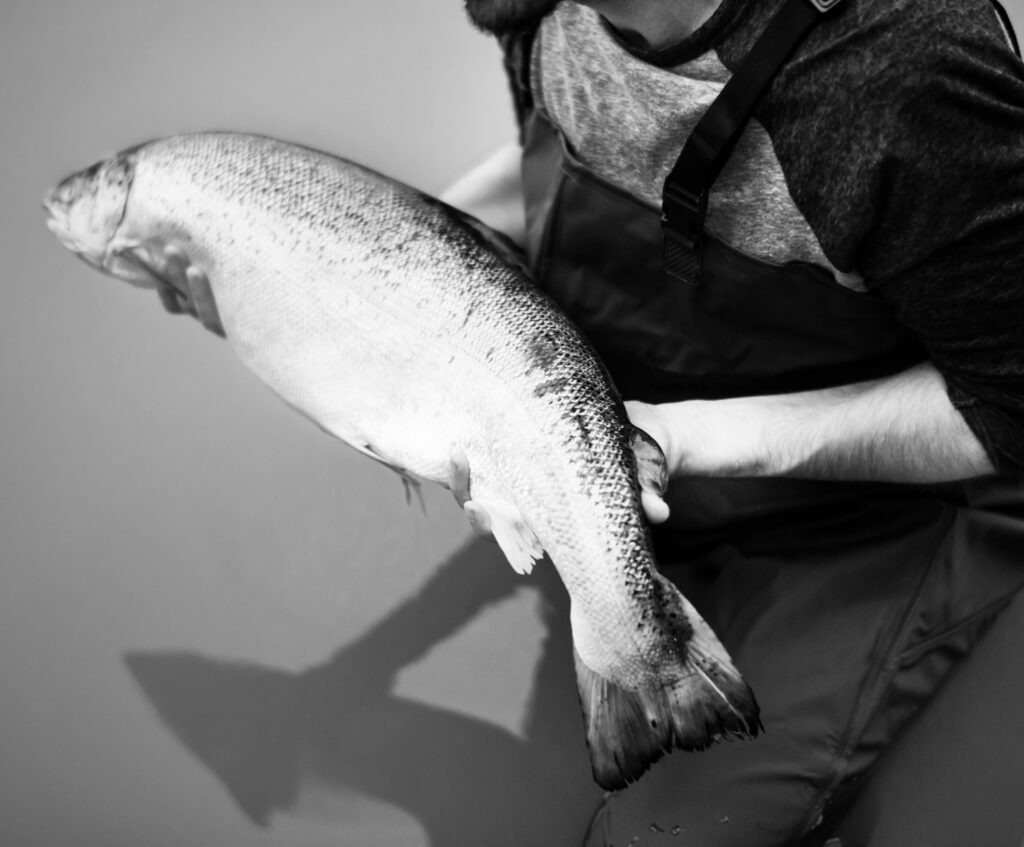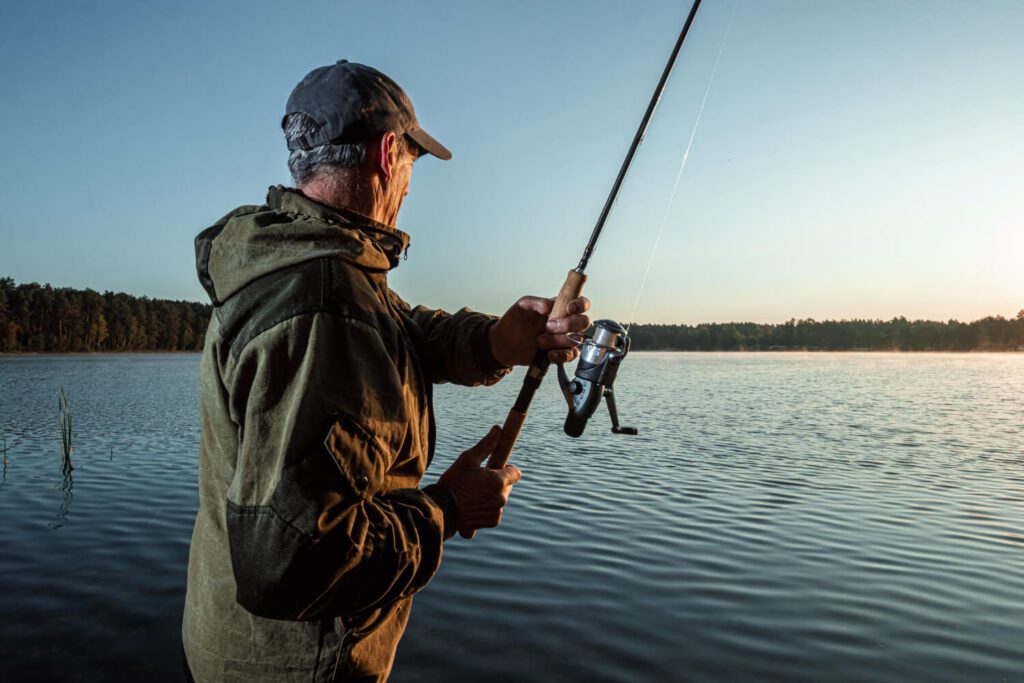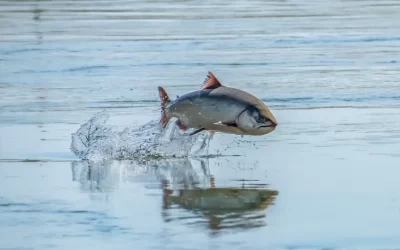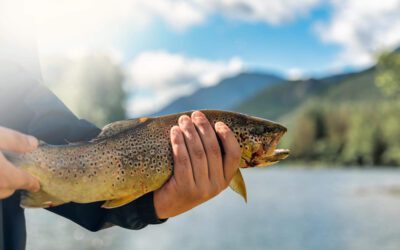Bead fishing for steelhead is nothing short of thrilling. These fierce, energetic fish put up a fight, making the pursuit an exhilarating experience for anglers. Over the years, bead fishing has emerged as a go-to technique for targeting steelhead, primarily because it effectively mimics the salmon eggs they devour during their spawning runs. Bead fishing for steelhead involves a combination of strategic approaches, precise gear selection, and meticulous attention to detail to increase the chances of landing this prized fish. The bead, used as a lure, is selected based on various conditions and preferences of the steelhead in specific environments and times.
Key Points
- Bead Size and Color: Steelhead generally prefer larger beads, typically 8-12mm, with bright colors like orange and fluorescent pink being particularly effective.
- Hook Size: Typically, size 4 to size 10 hooks are used for steelhead bead fishing, depending on bead size and fishing conditions.
- Fishing Rig Setup: The rig setup for bead fishing should ensure the bead is presented naturally, usually involving a leader, a hook positioned correctly relative to the bead, and a swivel or bobber to control depth.
- Gear Selection: A medium-light to medium-heavy rod paired with a spinning or baitcasting reel is usually ideal, with line strength matched to the size of the steelhead being targeted.
- Weather Conditions: Overcast or rainy conditions can be ideal for steelhead fishing, causing steelhead to be more active and less cautious.
How to Bead Fish for Steelhead
Pay Attention to the Water Conditions
When targeting steelhead, the strategic approach involves paying close attention to water clarity, flow, and temperature. Steelhead are often found in faster, oxygen-rich water, especially near underwater structures like rocks or logs. Position your bead where steelhead are likely to see it, ideally above their holding spot, allowing the current to present the bead naturally.
Focus on Realistic Presentation
For a convincing presentation, the bead should drift naturally with the current, just like a real salmon egg would. Achieving a drag-free drift is crucial, often necessitating frequent line mending to prevent unnatural movement of the bead. Additionally, stealth is crucial. Approach spots quietly and make long casts to avoid spooking the fish. 
Best Bead Colors and Sizes for Steelhead
Choosing the correct bead colors and sizes when targeting steelhead can drastically impact your success. Steelhead have a particular affinity for salmon eggs, and using beads that mimic these eggs accurately can lure these formidable fighters to your hook. Below are some in-depth insights on selecting the best bead colors and sizes for steelhead.
Color Selection
Steelhead can be enticed by a range of bead colors, but your choice should be influenced by the prevailing water conditions and light levels. Here’s how you can strategize your color selection:
- Vibrant Colors: Hot pink, bright orange, and radiant red are classic choices known for their effectiveness, especially in stained or murky waters where visibility is reduced. These vibrant colors can grab the attention of steelhead from a distance.
- Subtle Shades: In clear water conditions, subtle, translucent, or natural shades like peach, clear, and roe can be more appealing as they closely resemble natural eggs. These shades are less alarming to cautious steelhead, presenting a more realistic bait.
- Experimentation is Key: Steelhead can be unpredictable, and what works one day may not work the next. Having a diverse array of colors allows you to experiment and adapt to the fish’s preferences on any given day. Don’t hesitate to switch colors if you’re not getting bites.
What Bead Size is Best for Steelhead?
The size of the beads can play a pivotal role in enticing steelhead. Here’s how to choose the right size:
- Large Beads for Larger Eggs: Steelhead tend to prefer larger beads, usually between 8-12mm, as they mimic the larger eggs of salmon, a primary food source during their spawning runs. Larger beads also offer more visibility in turbulent or murky waters.
- Matching the Hatch: If possible, observe the size of the natural eggs in the water and match your bead size to them. This “matching the hatch” approach can make your beads more convincing to discerning steelhead.
- Adjusting to Conditions: In clear water or when steelhead are heavily pressured, downsizing to a smaller bead can sometimes produce better results by presenting a less obtrusive target.
The Importance of Realism
The ultimate goal when selecting bead color and size is to present the most realistic imitation of a salmon egg possible. The more convincing your bead, the higher your chances of attracting steelhead and enticing them to bite. Observe the natural environment, adjust your selections based on the prevailing conditions, and don’t be afraid to experiment until you find what works best. It’s also important to experiment with different types of beads, from glass beads, to plastic and more.
Rig Setup for Bead Fishing
Setting up your rig correctly is imperative for successful bead fishing. A well-set rig ensures that the bead presents naturally in the water, simulating real fish eggs, which in turn increases your chances of attracting and hooking steelhead. Here’s a step-by-step guide to setting up your rig for bead fishing:
1. Thread the Main Line
Start by threading your main line through the bead. For ease of adjustment, don’t secure the bead in place just yet.
2. Attach the Swivel
Once you’ve threaded the bead, tie the end of your main line to a small, high-quality barrel swivel. The swivel will prevent line twist and allow you to attach your leader.
3. Prepare the Leader
Attach a 2 to 4-foot length of leader material to the other end of the swivel. The leader should be of a lighter test than your main line to ensure that if you get snagged, only the leader will break, leaving the rest of your rig intact.
4. Secure the Bead
Position the bead on the leader at the desired distance from the hook (usually 1.5 to 2 inches) and secure it in place using a bead stop or a toothpick piece. Trim any excess material protruding from the bead.
5. Attach the Hook
Tie your hook to the end of the leader, ensuring that the distance between the bead and the hook is correct. Typically, smaller hooks like size 8 or 10 are preferred to minimize their visibility, but the hook size may be adjusted according to the bead size and target fish size.
6. Adjust the Depth
Using a bobber or a float on your main line above the swivel, adjust the depth at which your bead will drift. This is crucial to keep your bead in the strike zone. The depth should be adjusted based on the water depth and the position of the fish.
7. Fine-Tune the Setup
Before casting, inspect your setup carefully. Ensure that the bead is secure, the knots are tight, and the hook is sharp. Adjust the bead’s distance from the hook if necessary to ensure a natural presentation.
8. Test the Drift
Cast your setup into the water and observe the drift. The bead should drift naturally with the current, simulating a real egg. Adjust your float or bobber as needed to achieve the desired depth and drift.

Best Gear for Bead Fishing for Steelhead
When targeting steelhead with beads, choosing the right gear is essential. The right gear can enhance sensitivity to bites, allow for accurate casts, and provide enough strength to land these powerful fish. Below is a detailed guide on selecting the best gear for bead fishing for steelhead.
1. Rod Selection:
- Type & Action: A medium-light to medium-heavy rod with a fast action is generally ideal for bead fishing for steelhead. Fast action rods offer superior sensitivity to detect subtle bites and sufficient backbone to handle the powerful runs of steelhead.
- Length: A longer rod, around 9 to 11 feet, is preferred as it facilitates longer casts, better line control, and easier mending to achieve a natural drift of the bead.
- Material: Graphite rods are usually favored for their lightweight and highly sensitive nature, allowing anglers to feel even the slightest nibbles.
2. Reel Selection:
- Type: A high-quality spinning or baitcasting reel is essential. Spinning reels are generally more user-friendly, while baitcasting reels offer better line control and accuracy.
- Drag System: Choose a reel with a smooth and reliable drag system to handle the sudden, powerful runs of steelhead without breaking the line.
- Line Capacity: Ensure the reel has sufficient line capacity, especially when fishing in large rivers where steelhead can make long runs.
3. Line Choice:
- Main Line: A durable, high-visibility braided line between 8-20 lbs test is recommended for the main line to withstand the strength of steelhead and help in monitoring line movement for bite detection.
- Leader Material: A fluorocarbon leader is preferred due to its low visibility underwater and abrasion resistance. The leader should be lighter than the main line, typically between 6-12 lbs test.
4. Accessories:
- Hooks: Hooks between size 4 to 10 are generally suitable. The hook size should be matched with the bead size, ensuring it’s concealed behind the bead during the drift.
- Beads: A variety of beads in different sizes and colors should be available to adjust to the conditions and preferences of the steelhead.
- Swivels & Bobbers: Quality barrel swivels and adjustable bobbers or floats are crucial for controlling the depth and achieving a natural drift of the bead.
5. Clothing & Protective Gear:
- Waders: High-quality, breathable waders are essential for staying dry and comfortable while wading through the waters.
- Boots: Sturdy, slip-resistant boots are crucial to maintain stability on slippery rocks and submerged surfaces.
- Eyewear: Polarized sunglasses can help in spotting steelhead underwater and protecting eyes from the sun and potential hook accidents.
Ideal Weather Conditions for Bead Fishing for Steelhead
Understanding and leveraging the ideal weather conditions can significantly improve your success when bead fishing for steelhead. Steelhead are sensitive to changes in weather and water conditions, and adapting your approach to these changes can make the difference between a rewarding day on the water and a frustrating one.
1. Overcast Skies:
Steelhead, being wary creatures, are generally more active and willing to move into shallower waters under overcast skies. The diffused light reduces their visibility to predators, making them more comfortable to feed. This condition often provides the best opportunity for anglers to present beads effectively to roaming fish.
2. Light Rain:
A light drizzle or rain can be advantageous. It often stimulates steelhead to become more aggressive and feed actively. Additionally, rainfall can add a slight stain to the water, which can make steelhead less cautious and more likely to strike at your bead presentation.
3. Consistent Temperature:
Steelhead prefer stable weather conditions, where the temperature remains consistent over a period of time. Sudden temperature swings can make steelhead inactive and less likely to feed. Consistency in temperature, whether it’s cold or warm, usually results in more predictable steelhead behavior.
4. River Flow and Clarity:
Ideal conditions also depend on river flow and clarity. After heavy rains, rivers can become high and muddy, making fishing challenging. On the other hand, low and clear water can make steelhead spooky and hesitant to bite. Ideal conditions are when the river has a slight stain, which allows steelhead to feel secure but still allows them to see your bead presentation.
5. Early Morning or Late Afternoon:
Steelhead are often most active during the low-light conditions of early morning and late afternoon. These are the times when they feel safer from predators and are more likely to venture into shallower areas to feed. Planning your fishing excursions around these times can often lead to more encounters with active fish.
6. Adapt to the Conditions:
Steelhead can be caught in a variety of weather conditions, and sometimes, the less-than-ideal conditions can also produce surprising results. Being adaptable and willing to modify your approach, such as changing bead colors and sizes or adjusting your fishing location, is crucial in dealing with varying weather conditions.
FAQs about Bead Fishing for Steelhead
Can I use scent on my beads when fishing for steelhead?
Yes, applying scent to your beads can increase their attractiveness to steelhead by adding a smell component to the visual lure of the bead.
How often should I check and adjust my setup when bead fishing for steelhead?
Regularly. Check your setup frequently to ensure everything is in order and adjust your depth or presentation as needed based on the water conditions and fish behavior observed.
How important is color selection when bead fishing for steelhead?
Color selection is crucial and should be based on water clarity, light conditions, and personal experiences. Having a variety of colors on hand allows you to experiment and find what works best on a given day.
Wrapping Up – Everything You Need to Know About Bead Fishing for Steelhead
Bead fishing for steelhead is an art and science, involving strategic thinking, precise gear selection, and meticulous attention to detail. Each component, from bead size and color to rig setup and gear selection, plays a vital role in determining your success on the water. As an enthusiast, the challenge of adapting and refining my approach to the ever-changing conditions and behaviors of steelhead is part of the allure of bead fishing. It’s about more than just catching a fish; it’s about the journey of learning and the joy of interacting with nature in its rawest form. So, arm yourself with knowledge, gear up, and step into the waters to experience the thrill of bead fishing for steelhead! Tight lines!



